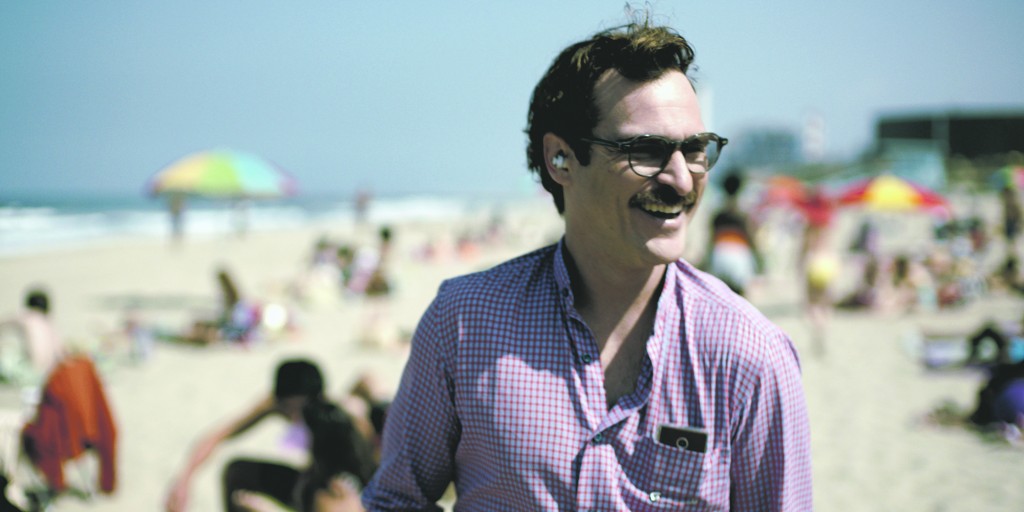
Winter break, better known as “Oscar Season” for movie lovers, is always an exciting time. It’s the time when studios roll out Academy Award contenders, the cream of the crop of each year’s films. To help you navigate through films that are still in theaters or to help you make future Netflix decisions, here is a roundup of some of the best and worst films that were released during winter break.
The Best
“Her,” directed by Spike Jonze
“Her” is the rare sci-fi film that is neither dystopian nor cynical. It tells the story of Theodore Twombly (Joaquin Phoenix) falling in love with a Siri-esque operating system voiced by Scarlett Johansson. With a muted color palette, Jonze paints a conceivable near future. But, sci-fi is a genre usually used as a parable for something not shown onscreen. The relationship between the protagonist and his OS is not a commentary of humans becoming reliant on technology, which is refreshing. The film is sometimes heartbreaking but also incredibly cheerful. Phoenix gives a subtle performance that is even better when compared to his over-the-top turn in last year’s “The Master.” All this makes “Her” possibly the best film of 2013.
“Inside Llewyn Davis,” directed by Joel and Ethan Coen
“Inside Llewyn Davis,” a musical odyssey, is as infectious as its folk soundtrack. The movie is not simply a retelling of the 1960s Greenwich Village folk scene, but rather a homage to it. The characters, including the eponymous character of Llewyn Davis (Oscar Isaac), are amalgamations of real life characters. The story itself serves as Homeric adventure piece, as Davis moves from place to place while falling under hard times, sometimes because of his own doing.
The high points of the movie, though, are the music scenes. All songs are performed in full, and each serves a purpose in the story. T-Bone Burnett, who collaborated with the Coens on “O Brother, Where Art Thou,” picks and arranges songs to serve as a celebration of the emotional resonance of folk music. That and the witty humor of the Coen Brothers make “Inside Llewyn Davis” their best film since “No Country for Old Men.”
“The Wolf of Wall Street,” directed by Martin Scorsese
The life story of Jordan Belfort (Leonardo DiCaprio) is disgusting, repulsive and incredibly entertaining. Scorsese makes a cynical update of “Goodfellas” except without his trademark character redemption. It is no wonder that the reactions vary from praise to unadulterated hate.
The film is told from the perspective of Belfort, and to say that he is an unreliable narrator is an understatement. The hyperbolic portrayal of his life is sickening and funny. It’s a film of contradictions based on Belfort’s audience — the lead character is made out to be evil by a magazine, but it makes people desire him more. The audience is manipulated in the same way — while we laugh at the horrible deeds committed onscreen, Scorsese keeps the scene going until it becomes grotesque and uncomfortable. No director has ever manipulated his audience as skillfully as Scorsese.
The Worst
“August: Osage County,” directed by John Wells
There is a reason that many stage actors haven’t smoothly transitioned to screen acting. In stage acting, an actor is required to act with big flourishes and grand emotions to reach the back of the theater. Film acting requires more nuance to prevent overacting. Unfortunately, it’s all too obvious that the source material of this movie is a stage production by Tracy Letts. Underneath, the screenplay seems to be a strong testament of what it means to be loyal to family, but that is overshadowed by the over-the-top performances by all the actors involved.
“47 Ronin,” directed by Carl Rinsch
According to the opening titles of this film, “The story of the 47 Ronin is the story of Japan.” In essence, that is a truthful statement. The legend is the ultimate representation of the sacred samurai code of Bushido. Unfortunately, this Japanese epic was thought to be so unappealing to Western audiences that accommodations had to be made to the story in order to be more accessible, which includes a shape-shifting witch and mystical monsters and dragons. This thought process eventually leads to a mess of a film that is more boring than hilariously bad.


